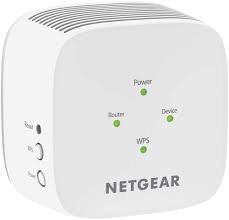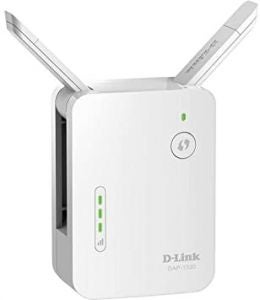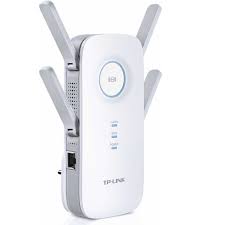If you’re looking to bolster your home wi-fi network, an aptly placed wi-fi extender can get the job done by linking up with your router to provide extra coverage. Wi-fi extenders are typically designed to work with routers of all types, and there are a number of options available.
Also sometimes referred to as wi-fi boosters and range extenders, wi-fi extenders pick up a router’s wi-fi signal and then repeat it. Working in tandem with the router, it expands the scope of a home network’s wi-fi coverage into hard-to-reach places.
It’s a potentially simple solution for households experiencing wi-fi woes. However, before buying one, take the time to identify the causes of any network issues you are experiencing.
When to use a wi-fi extender?
A wi-fi extender may be just what you need to help expand your home wi-fi network’s coverage. However it’s worthwhile weighing up a number of factors before determining the best path forward for your household.
Keep in mind that the demands on wi-fi networks are growing. A greater range of devices are seeking to connect, and services – such as HD video streaming and online gaming – are increasingly data hungry.
If you are experiencing network issues, wi-fi performance can be impacted by:
- Router – if you’re using an older model router, it might simply not be up to the job. Also, it’s a potentially simple solution, but is your router positioned where it will provide the best coverage?
- Ethernet ports – most routers come with Ethernet ports. If you’re not using these ports for wired connections to devices with high data usage, such as smart TVs, this could be creating a greater burden on your wi-fi network.
- Wireless bands – many routers utilise the 2.4GHz and 5GHz bands. (The 2.4GHz band offers better range and the 5GHz band greater speed.) However, if all of your devices are connecting on the one band, it could be creating network congestion.
- Devices – as with routers, if you’re using older devices they simply may not be capable of providing the speeds you require. For instance, older devices may only be able to connect to the 2.4GHz band.
- Retailer – is the problem with your broadband provider? It’s worthwhile getting in touch with your provider if you’re experiencing consistently lower speeds than your plan’s advertised speeds.
A good way to get a gauge on the types of speeds your household is receiving is to connect a device (such as a laptop) directly to your router via Ethernet and to run a speed test. Next connect wirelessly and conduct speed tests in different areas of your household.
This will demonstrate the difference in speed between your wired and wireless connections. It will also help you check how your wi-fi network is performing in different areas of your home.
Strong wi-fi network performance is dependent on a range of factors. When seeking to utilise a wi-fi extender, it’s important to keep in mind that it will only be as good as the wider network it’s part of.

How does a wi-fi extender work?
Always carefully consider where you position a wi-fi extender. It should be placed roughly halfway between your router and the area in which you are seeking to boost wi-fi coverage. Of course, you’ll need to be able to plug it into the mains power supply.
It may be a case of trial and error in seeking out an ideal spot. But many wi-fi extenders are designed to help with this process, incorporating indicators that guide users to optimise performance.
It’s also important to keep in mind that wi-fi extenders are only capable of rebroadcasting a wireless signal at the same strength at which it’s received. A full-strength signal will be rebroadcast at full strength, and weaker signals at weaker strengths.
Wi-Fi extender features to keep in mind:
- Wi-fi standard – refers to wireless performance capability. The wi-fi 5 standard (also referred to as 802.11ac) is commonly used. Wi-fi 6 is the most recently introduced standard. Look to match the wireless standard of your router with your wi-fi extender.
- Bands – as with routers, wi-fi extenders commonly operate on two separate wireless bands: 2.4GHz and 5GHz band. Dual-band devices provide greater connection options and capacity to manage a network.
- Speed – is measured in mbps. Wi-fi extenders often advertise the total mbps delivered across both the 2.4GHz and 5GHz bands. So make sure you check the total speed and the speeds delivered across each band separately.
- Set-up – many wi-fi extenders are designed to plug-and-play, allowing for simple pairing with a router. Some manufacturers also offer apps to assist with the process.
- Security – different wireless protocols, such as WPA and WPA2, provide varying levels of security.
- Design – wi-fi extenders are typically compact, designed to plug directly into power points or to be positioned on a flat surface, such as a bookshelf or desk.
Also keep in mind that wi-fi extenders create a separate wi-fi connection. This is often displayed in your network name list as the router network name with _EXT at the end. If you are moving around your house, accessing internet via a mobile device, you may need to switch between the different connections.
This could potentially cause delays when disconnecting and then reconnecting. However, if an extender is intended to provide coverage for stationary devices in different areas of your household, this will not present an issue.
Wi-fi extenders
There are a range of wi-fi extenders available at varying price points. So always shop around and weigh up the respective features on offer and how they fit your needs.

Netgear AC750 Wi-fi Range Extender (EX3110)
Netgear states that its AC750 Wi-fi Range Extender (EX3110) works with any standard wi-fi router, and can be used for HD video streaming and gaming. It features FastLane technology that utilises both wi-fi bands to establish one high-speed connection.
EX3110 features include:
- Wi-fi – wi-fi 5, 802.11ac, supporting ac/b/g/n wi-fi devices; dual-band 2.4GHz and 5GHz
- Speed – dual-band wi-fi up to 750mbps
- Setup – Push ‘N’ Connect using WPS1
- Security – WPA/WPA2-PSK and WEP
- Design – 72.5mm x 72.5mm x 64.8mm, can be plugged directly into a power point. Smart LED indicators help to determine the best location
Price – the EX3110 can be found online for around $109*.

D-Link DAP-1620 AC1200 Wi-fi Range Extender
D-Link’s DAP-1620 AC1200 Wi-fi Range Extender is equipped with two adjustable external antennas, designed to deliver maximum range. The DAP-1620 is compatible with any wireless router brand.
DAP-1620 features include:
- Wi-fi – wi-fi 5, 802.11ac, supporting ac/n/g/b/a wi-fi devices; dual-band 2.4GHz and 5GHz
- Speed – up to 300mbps (2.4GHz) and 867 mbps (5GHz); gigabit ethernet port for a wired connection
- Set-up – push button WPS set-up, or via the QRS Mobile app
- Security – WPA and WPA2
- Design – 120mm x 59mm x 42 mm, can be plugged directly into a power point. Smart signal indicator helps determine the best coverage
Price – the D-Link website lists the DAP-1620 at $179.99*.

TP-Link RE650 AC2600 Wi-fi Range Extender
TP-Link’s RE650 AC2600 Wi-fi Range Extender sports four fixed external antennas, which TP-Link states extends wi-fi coverage by up to 130m2. The RE650 is compatible with any wireless router.
RE650 features include:
- Wi-fi – Wi-fi 5, 802.11ac, supporting ac/n/g/b wi-fi devices; dual-band 2.4GHz and 5GHz
- Speed – simultaneous 800mbps on 2.4GHz plus 1733mbps on 5GHz; MU-MIMO allows the RE650 to serve up to four devices at once, reducing wait time and increasing throughput for every device. Beamforming detects the location of devices and concentrates wi-fi towards them; gigabit ethernet port for a wired connection
- Set-up – WPS set-up, and the TP-Link Tether app allow users to monitor the RE650, controlling its functions and altering its settings from a compatible Android or iOS mobile device
- Security – 64/128-bit WEP, WPA-PSK, WPA2-PSK
- Design – 163mm x 86mm x 40mm, can be plugged directly into a power point. Intelligent signal light helps to determine the best location.
Price – the RE650 can be found online for around $249*.
*Further information on pricing can be found at individual retailer websites. This should be used as a starter guide and not considered an actual quote.
Of course, for the best wi-fi coverage in your home network, you need the best unlimited broadband plan. To help Kiwi consumers make more informed decisions, Canstar Blue annually rates all the providers in the market. We survey thousands of broadband customers and ask them to score their providers across categories including Overall Satisfaction, Value for Money and Customer Service.
Canstar Blue’s 2021 review of NZ internet providers compares NOW, 2degrees, Bigpipe, Contact, MyRepublic, Orcon, Skinny, Slingshot, Spark, Stuff Fibre, Trustpower, Vodafone and Voyager, and awards the best our 5 Star rating:
^ By clicking on a brand or 'details' button, you will leave Canstar Blue and be taken to either a product provider website or a Canstar Blue NZ brand page. You agree that Canstar Blue NZ’s terms and conditions apply (without limitation) to your use of this service,to any referral to a product provider from our website, and any transaction that follows. Canstar Blue may earn a fee for referrals from its website tables, and from sponsorship (advertising) of certain products. Payment of sponsorship fees does not influence the star rating that Canstar Blue awards to a sponsored product. Fees payable by product providers for referrals and sponsorship may vary between providers, website position, and revenue model. Sponsorship fees may be higher than referral fees. Sponsored products are clearly disclosed as such on website pages. They may appear in a number of areas of the website such as in comparison tables, on hub pages and in articles. Sponsored products may be displayed in a fixed position in a table, regardless of the product’s rating, price or other attributes. The table position of a sponsored product does not indicate any ranking, rating or endorsement by Canstar Blue. See How we are funded for further details.
Canstar Blue NZ research finalised in May 2024, published in June 2024.
See Our Ratings Methodology
The table above is an abridged version of our full research, so to find out more about NZ’s best broadband providers, just click on the big button below:
Compare broadband providers for free with Canstar!
Enjoy reading this article?
You can like us on Facebook and get social, or sign up to receive more news like this straight to your inbox.
By subscribing you agree to the Canstar Privacy Policy


Share this article